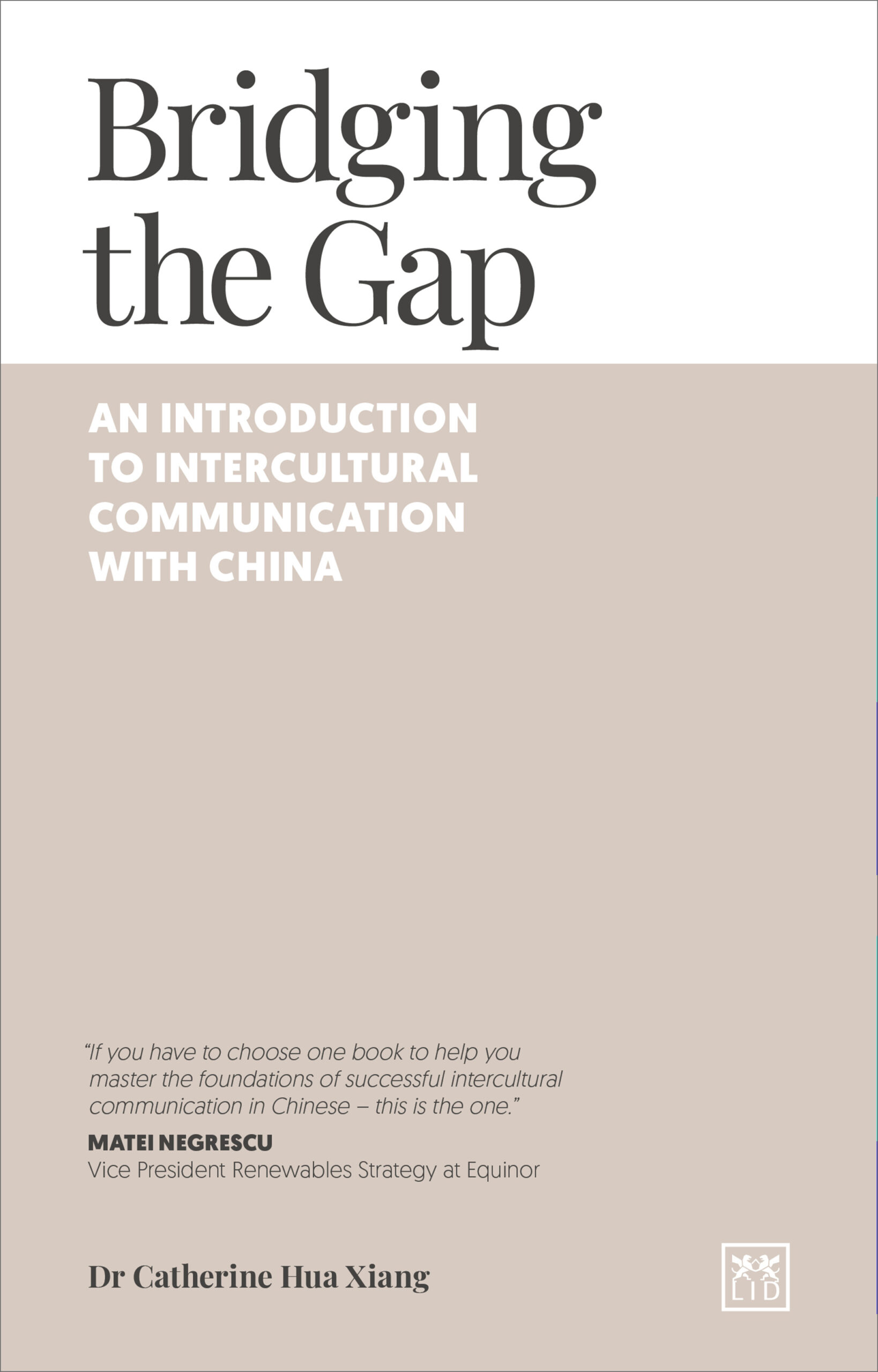|
Chinese Communication Style with Catherine Xiang
Chinese Communication Style

By Guest Contributor Dr Catherine Hua Xiang
Author of Bridging the Gap, Dr Catherine Hua Xiang, equips you with an understanding of the multifaceted nature of Chinese communication styles.
Chinese communication style is influenced by the cultural norms and values of China. This article will equip you with an understanding of the multifaceted nature of Chinese communication styles, from the high-context, indirect, and relationship-focused approaches prevalent in Chinese society, to the rich lexical tapestry of the Chinese language itself. You will be better prepared to navigate the complex landscape of Chinese cultural dynamics, fostering deeper connections and more meaningful interactions in the process.
Chinese communication is often considered ‘high-context’, a term coined by anthropologist Edward T. Hall in his seminal work, ‘Beyond Culture’ (1976). In high-context cultures, much of the message is conveyed through nonverbal cues, social norms and shared understanding, rather than explicit words. Let’s take a closer look at the characteristics of China as a high-context communication culture and illustrate how these features manifest in everyday communication and their implications on intercultural understanding. Chinese communication has several key characteristics, including:
Reliance on nonverbal cues: In high-context cultures such as Chinese culture, nonverbal communication, such as facial expressions, body language and gestures, carries significant weight in conveying meaning during conversations. These cues provide additional layers of meaning that complement the spoken language and facilitate understanding.
The Chinese perspective on listening is encapsulated in the idiom ‘察言观色’ (Cháyánguānsè), which implies that while paying attention to what is said is important, observing how it is said is even more crucial. This concept is further illustrated in the Chinese character for ‘listen,’ 听 (tīng), in its traditional form, which offers profound insight into the cultural understanding of listening in China.
The character, in its traditional form, comprises several parts:

King (王): This element suggests the respect and attention that should be accorded when listening, akin to the attentiveness expected in the presence of a king.
Ten (十) and Eye (目): Together, these signify that effective listening involves not just auditory but also visual observation and attention to detail.
Heart (心): Arguably the most essential component, it implies that true listening is not solely an auditory or intellectual task, but also involves empathy, understanding and emotional engagement.
The composition of 听 highlights a holistic approach to listening. It’s not merely about hearing words, but involves interpreting and understanding them within a broader context, which includes non-verbal cues and emotional resonance. This comprehensive view of listening in Chinese culture underscores the importance of active and empathetic communication, necessitating full engagement in the process of listening.
Indirectness: Chinese speakers often use hints, suggestions, or metaphorical language to express their thoughts and feelings, rather than stating them outright. This indirectness allows for face-saving and the maintenance of harmony in social interactions. According to anthropologist Ho (1944), there are two types of face in Chinese culture: “mianzi” (面子and “lian” (脸). Mianzi refers to the public or social face, while lian refers to the private or personal face. The concept of face is complex and refers to a person’s reputation, social status and dignity, and is an important aspect of interpersonal relationships in Chinese society. It is closely tied to the concepts of respect, honour and shame.
In Chinese culture, maintaining face is crucial, and people are often very aware of their own face as well as the face of others. Losing face can be a source of great embarrassment, and it can damage a person’s social standing and relationships. Indirectness becomes a strategy for face work.
Emphasis on relationships: High-context cultures place great importance on developing and maintaining interpersonal relationships. Building and maintaining relationships, or guanxi, is crucial in Chinese culture. Communication styles often focus on fostering personal connections and trust, with an emphasis on mutual reciprocity and loyalty. Chinese culture places great importance on respecting authority and social hierarchy. Communication styles often reflect this by demonstrating deference, politeness, and formality when interacting with people of higher status or older age.
Chinese individuals are also taught to be modest and to prioritize moral integrity and credibility in their interactions. This approach isn’t just for personal virtue – it often leads to success in both careers and social settings. As Chen (1997) notes, a lasting relationship can pave the way for countless future business opportunities. Contrary to Western views where a deal often signals the end of an association, in China, it’s just the beginning of a lasting personal connection.
It’s essential to understand that the act of doing business in China isn’t just a transaction. Going into an arrangement purely for profit is seen as cold and potentially damaging to interpersonal relations (Huang et al., 1994). What’s prized in Chinese culture is a business that strengthens the bond between individuals. And these bonds? They’re resilient. Even if a particular venture fails, the personal relationship remains, leaving the door open for future collaborations. Conversely, a successful deal without a strong relationship foundation doesn’t guarantee future collaborations.
Importance of context: High-context cultures rely on contextual factors, such as the speaker’s identity, the listener’s relationship to the speaker, and the social situation, to help interpret the meaning behind words and actions.
Preservation of harmony: High-context communication cultures prioritize maintaining social harmony and avoiding confrontation or conflict. We have discussed the importance of interpersonal relationships but be aware that this is not just on an individual level. Chinese communication styles prioritize group harmony and the needs of the community over individual interests. This can result in communication patterns that emphasize consensus-building, cooperation, and avoiding direct confrontation.
Understanding China’s high-context communication culture has important implications for intercultural communication and relationship-building. By appreciating the nuances of Chinese communication styles, individuals from low-context cultures can better adapt their communication strategies to effectively navigate social and professional interactions with Chinese counterparts. This adaptation can lead to more productive and harmonious relationships, facilitating intercultural understanding and collaboration.
ABOUT THE AUTHOR
Suggested Reading
 This is the first title in the new “Navigating China” series of books written by leading experts in the field of international businessand cross-cultural communications. The book unravels the nuances of effective communication in China. It introduces readers to the basics of intercultural communication. It also highlights cultural, linguistic, and socio-economic factors that shape how Chinese people communicate. This essential guide will equip readers with the understanding needed to navigate cultural differences, making their cross-cultural interactions more successful and rewarding.
This is the first title in the new “Navigating China” series of books written by leading experts in the field of international businessand cross-cultural communications. The book unravels the nuances of effective communication in China. It introduces readers to the basics of intercultural communication. It also highlights cultural, linguistic, and socio-economic factors that shape how Chinese people communicate. This essential guide will equip readers with the understanding needed to navigate cultural differences, making their cross-cultural interactions more successful and rewarding.

